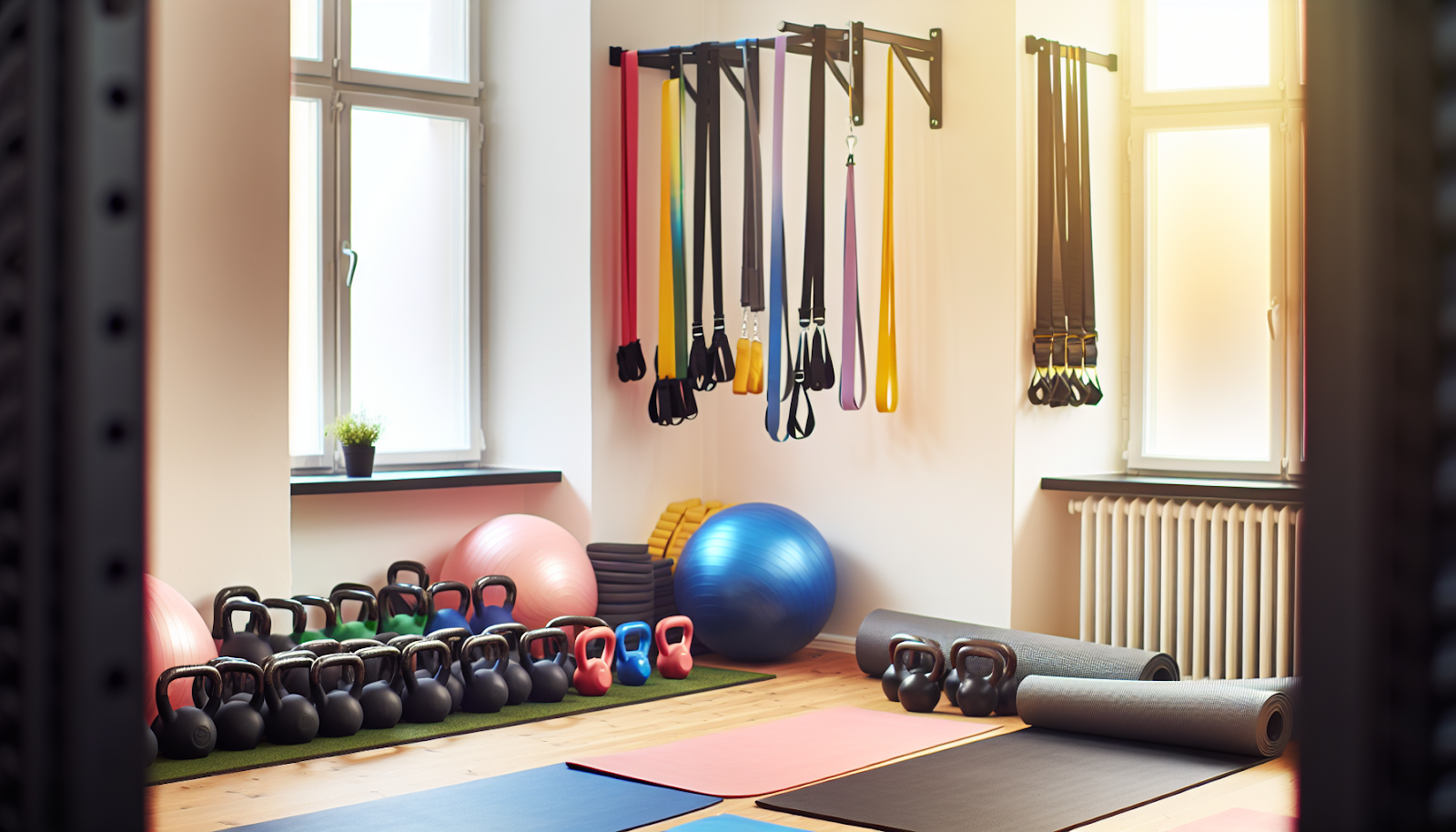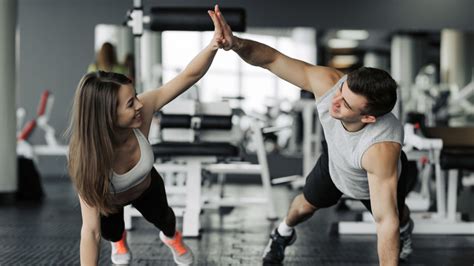Embarking on a fitness journey can often leave you at a crossroads, choosing between different workout regimens.
Two popular training methods, Functional Fitness and CrossFit, often spark debates among fitness enthusiasts.
In this blog post, we will delve into the topic of “functional fitness vs CrossFit”, providing a comprehensive comparison that will help you make an informed decision.
Exploring Functional Fitness Training
Distinctive in the fitness world, functional fitness training emphasizes exercises that mimic movements we execute in our daily lives.
This training method utilizes your own body weight and free weights to enhance overall strength, balance, and coordination, making it an excellent choice for individuals seeking to improve their daily life performance.
Functional fitness training primarily targets the development of:
- Core strength
- Balance
- Mobility
- Overall strength
It’s not just about lifting heavy weights, but about improving aspects of fitness such as power, endurance, and flexibility, all of which are applicable to daily activities.
The exercises chosen for functional fitness training, also known as functional training exercises, include:
- Walking lunges
- Squats
- Push-ups
- Pull-ups
These exercises engage multiple muscle groups and replicate activities commonly performed in daily life, making functional fitness a significant part of health and fitness training.
The Essence of Functional Movements
Functional movements are at the core of functional fitness training. They are characterized by:
- The coordinated effort of large muscle groups
- Prioritizing overall body strength and awareness
- Focusing on functional movements rather than isolated muscles or machine-based exercises.
Functional training underscores a variety of functional movements that engage different muscles and body parts, aiming to improve an individual’s balance and overall strength.
In contrast, cross training, like CrossFit, emphasizes high-intensity, diverse workouts incorporating weightlifting, gymnastics, and cardiovascular exercises, making it an excellent example of crossfit and functional training.
Training with Your Own Body Weight
Training with one’s own body weight is a significant aspect of functional fitness. It offers numerous benefits, including:
- Engaging multiple muscles and joints to promote overall strength and coordination
- Increasing strength and muscle mass
- Improving cardiovascular endurance
It’s suitable for all fitness levels, making it accessible to everyone, regardless of their current fitness state.
Effective execution of strength training exercises like squats, lunges, and push-ups requires correct form and engagement of the correct muscles. As you progress, these exercises can be adjusted in intensity to accommodate different fitness levels, ensuring everyone can participate and reap the benefits of functional fitness training.
Advantages of Functional Fitness
Participating in functional fitness training offers numerous advantages, such as:
- Improved balance
- Stability
- Strength
- Enhanced coordination and balance, leading to better performance in everyday tasks
- Decreased risk of injury
Functional fitness aids in reducing injury risks by:
- Encouraging the activation and growth of muscle-repairing satellite cells
- Boosting neurotransmitter synthesis for better coordination
- Augmenting the flexibility and resilience of muscles and tendons.
CrossFit Unveiled: A High-Intensity Regimen
Conversely, CrossFit represents a high-intensity workout regimen that combines weightlifting, gymnastics, and timed events, aiming to cultivate:
- strength
- endurance
- balance
- flexibility
Its unique approach to fitness is competitive and demanding, preparing individuals for any physical challenge they may encounter.
The main goals of CrossFit include building strength, enhancing endurance, coordination, speed, balance, and flexibility, with the added advantage of bolstering cardiovascular strength and endurance.
This high-intensity regimen utilizes gym equipment and free weights, making it a unique style of fitness training with a CrossFit focus.
CrossFit's Unique Approach to Fitness
Known for its competitive and challenging nature, CrossFit incorporates high-intensity, diverse workouts integrating weightlifting, gymnastics, and cardiovascular exercises.
It offers athletes the opportunity to assess their fitness levels and engage in challenging competition, while also promoting a sense of community and camaraderie.
The CrossFit methodology prepares individuals for physical challenges by underlining general physical preparedness (GPP) and fostering a robust and adaptable fitness foundation.
It strives to enhance overall fitness through diverse workout routines, establishing a comprehensive, general, and encompassing fitness that enhances strength and endurance concurrently.
Equipment and Exercises in CrossFit
CrossFit training incorporates a range of exercises and equipment, including kettlebells, barbells, and gymnastic rings.
This diversity of equipment allows for versatile and dynamic workouts that challenge multiple muscle groups.
Kettlebells offer a wide range of benefits in CrossFit workouts, including:
- Engaging multiple muscle groups through multi-joint exercises
- Enhancing muscle strength
- Improving movement coordination
- Boosting overall performance
CrossFit's Impact on Physical Capabilities
CrossFit can significantly improve physical capabilities, including cardiovascular endurance, strength, and flexibility.
High-intensity interval training (HIIT), a key component of CrossFit workouts, offers a potent stimulus for improving cardiorespiratory endurance when compared to conventional cardio exercises.
The improvement of strength through CrossFit is facilitated by exercises that increase VO2max and improve endurance, thereby enhancing overall physical fitness.
This holistic strategy of simultaneously enhancing strength and endurance is a fundamental tenet of CrossFit.
Comparing Philosophies: Functional Fitness vs CrossFit
While functional fitness and CrossFit share some similarities, they also have distinct differences.
Both employ training methods that integrate functional movements aimed at enhancing overall strength, endurance, and agility, but CrossFit is distinguished by its elevated level of intensity and community-centric setting.
The main focus of functional fitness training is to improve overall strength and balance for everyday activities, while CrossFit emphasizes diverse workouts and functional movements with a focus on competition and community involvement.
Training Method and Intensity
Generally, functional fitness training is of lower intensity compared to CrossFit. The more rigorous nature of CrossFit training results in:
- Enhanced VO2max
- Strength
- Endurance
- Improvements in body composition, particularly lean body mass
As opposed to both functional training and functional fitness training.
Functional fitness includes exercises like lunges, deadlifts, push-ups, and planks, with a goal to boost strength, stability, mobility, and flexibility, all crucial for daily activities.
Fitness Goals Alignment
Functional fitness is focused on enhancing daily life performance to make everyday activities more manageable and efficient, while CrossFit is geared towards preparing individuals for a variety of physical challenges by improving a broad spectrum of physical abilities.
The CrossFit methodology prepares individuals for physical challenges by underlining general physical preparedness (GPP) and fostering a robust and adaptable fitness foundation.
It utilizes a comprehensive approach, striving to enhance overall fitness through diverse workout routines.
Coaching and Community Aspects
While both functional fitness and CrossFit benefit from professional coaching, their approaches differ. Functional fitness coaching prioritizes the enhancement of overall body strength, power, and mobility, with an emphasis on muscle coordination and fitness.
On the other hand, CrossFit coaching emphasizes competitive and high-intensity workouts, incorporating weightlifting and gymnastics within a community-centric setting.
In the context of a competitive environment, CrossFit coaches not only offer guidance and encouragement similar to functional fitness, but also have a significant role in cultivating a competitive atmosphere.
This includes encouraging teamwork, communication, and strategic thinking among participants to improve their performance.
Integrating Functional Training into Your Fitness Journey
Whether you’re beginning your fitness journey or looking to switch up your routine, integrating functional training can be a game-changer. This section will guide you on how to personalize your workout plan, include various muscle groups, and transition from other exercise programs.
Personalizing Your Workout Plan
To personalize your workout plan, follow these steps:
- Consider your current fitness level, past exercise experience, and exercise preferences.
- Identify your motivations and set clear goals for your fitness journey.
- Take into account any challenges you may face and develop strategies to overcome them.
- Adjust the intensity of your workouts to match your fitness level and goals.
- Maintain consistency in your training by scheduling regular workout sessions.
By customizing your functional fitness exercises based on these factors, you can create a workout plan that is tailored to your unique needs and will help you achieve your fitness goals.
As one’s fitness levels enhance, their functional fitness workout plan should evolve by:
- Escalating the workout intensity
- Introducing more complex movements
- Adding a variety of new exercises
- Focusing on enhancing technique and form
- Adjusting resistance, repetitions, or sets to ensure that the body remains challenged.
Including Various Muscle Groups
Functional fitness training engages a variety of muscle groups, such as:
- Hamstrings
- Glutes
- Quadriceps
- Back
- Chest
- Core
This comprehensive approach to strength and fitness involves the simultaneous activation of multiple muscle groups.
The inclusion of a broad range of muscle groups in functional fitness workouts is vital to improve:
- coordination
- balance
- posture
- flexibility
It promotes better muscle activation and facilitates the performance of everyday tasks by engaging multiple muscle groups simultaneously through a wide range of motions.
Transitioning from Other Exercise Programs
If you’re looking to switch from a traditional weightlifting or bodybuilding routine, transitioning to functional fitness can provide additional benefits and improve your overall fitness.
By incorporating full-body compound workouts, focusing on raising metabolism through training, and including explosive movements, you can effectively make the shift to functional fitness.
Shifting from conventional weightlifting to functional fitness can impact muscle structure by emphasizing stability and core muscle activation, resulting in improved muscle contractions and greater muscular activation.
The inclusion of a wider range of movement patterns and functional movements in functional fitness also improves muscle function and flexibility.
Maximizing Benefits: Tips and Strategies
To fully leverage the benefits of functional fitness or CrossFit, remember a few crucial tips and strategies.
These include ensuring proper coaching and safety, balancing intensity and recovery, and maintaining a long-term commitment to health.
Proper Coaching and Safety
The significance of proper coaching and safety in both functional fitness and CrossFit is paramount. A coach guarantees safety in Functional Fitness and CrossFit classes by:
- Offering high-quality coaching
- Adjusting exercises as needed
- Correcting form
- Providing alternative options
- Ensuring that participants execute exercises in a safe manner.
Following safety guidelines such as:
- Utilizing correct technique and form
- Gradually escalating the intensity of workouts
- Progressing at a pace suitable to your capabilities
- Seeking guidance from a qualified coach or trainer
can go a long way in preventing injuries and maximizing the effectiveness of workouts.
Balancing Intensity and Recovery
In fitness routines, it’s vital to strike a balance between workout intensity and recovery to optimize performance and lessen the risk of injury.
Active recovery offers benefits to functional fitness and CrossFit training by facilitating muscle recovery and reducing muscle soreness. Research indicates that active recovery is more effective than complete rest in supporting recovery.
Some examples of active recovery activities include:
- Light jogging or walking
- Cycling
- Swimming
- Yoga or stretching exercises
- Foam rolling or self-massage
Incorporating active recovery into your fitness routine can help improve your overall performance and keep you feeling your best.
Quality sleep supports improved sleep cycles and enhances performance and tissue repair, while nutrition supplies essential nutrients and minerals for muscle repair and growth.
Adequate sleep promotes the release of growth hormone, which is particularly important after intense workouts, and nutritional intake can be supplemented with appropriate supplements to aid in body replenishment and facilitate improved recovery.
Long-Term Commitment to Health
Your dedication to health should extend beyond a temporary phase and be a long-term commitment.
A sustained dedication to health has a significant impact on the effectiveness of a fitness program by enhancing health markers such as muscle strength and aerobic endurance, as well as improving performance factors like strength, agility, and speed.
Your fitness journey is a marathon, not a sprint, so be patient, stay consistent, and enjoy the process.
Get Energy Regardless Which Workouts You Do
Both functional fitness and crossfit are great things to incorporate in your exercise routine. But regardless, you're going to need energy and, likely, help bulking up.
That's what our nautral pre-workout and protein powders can do for you.
Try our proprietary blends that don't have artificial sweeteners, colors, or chemicals, so you can build your legacy.





